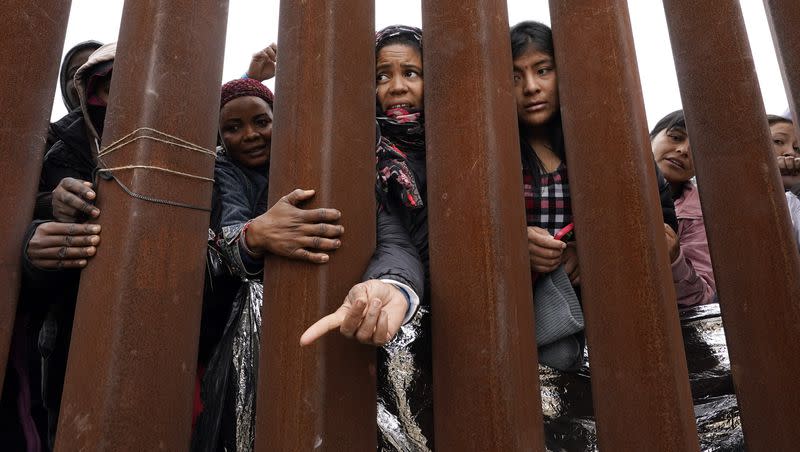Opinion: How to fix our outdated immigration system

The people working to reform the U.S. immigration system are as multifaceted as the problems we face.
That is one of the key takeaways from my time hearing — and learning — from so many of those whose lives are affected by the issues at our southern border.
Last month, I visited those working on the frontlines of this complicated issue. I talked with exhausted border patrol agents, private landowners, a former congresswoman, tireless volunteers at Catholic Charities and immigrants who traveled from as far away as China.
I heard things from these people that I never expected to hear. Our border patrol agents are overwhelmed and understaffed, dealing with a dramatic increase in the rates of unaccompanied minors arriving at our border — babies and toddlers sent with strangers with their parents’ phone numbers taped to their clothing. A private landowner shared with us how he’s had to pull more than 20 dead bodies out of the Rio Grande on his property, victims of the cartel. A former congresswoman described a midnight raid in her gated neighborhood in McAllen, Texas, because cartel members are living and thriving in our communities. I heard volunteers at a respite center describe how asylum-seeking families arrive with literally nothing other than a hope for a better life.
Related
To many, border issues may seem like a border state problem. But Utah is not removed from the impacts of what’s happening. Drugs flow into our state, with dramatic increases in fentanyl overdoses and deaths in recent years. Utah is also home to many people seeking asylum — in fact several people, including a family from Guatemala with two young children, were on our flight home from McAllen, greeted by their family when we exited the airport.
These stories, coupled with the numbers regarding our southern border, reveal an outdated immigration system that incentivizes illegal immigration while failing to meet the challenges of ever-changing migration patterns.
U.S. Border Patrol agents apprehended 182,000 migrants at the southwestern border in April. This was an increase of 20,000 from March, which itself saw a 25% increase from the previous month. And the border is still in crisis. Even with the drastic reductions in apprehensions over the last few days, May is still on pace to be the 27th month in a row with southern border apprehensions over 100,000. In contrast, between FY2008 and February 2021, just one month saw apprehensions over 100,000.
Correlated with these increases in migration are upticks in those who would exploit the vulnerabilities at our southern border. Last fiscal year, the Border Patrol reported it apprehended 98 individuals who appeared on a terrorist watch list. The previous fiscal year? 16. And it has taken another 70 such individuals into custody since October 2022.
This is why any serious immigration reform should prioritize enhancing U.S. border security in a comprehensive fashion: walls in strategic locations to better influence migration patterns, improved technology to gather better data and know who is coming and who is leaving through our ports of entry, and more — a lot more — personnel to enforce our immigration laws and adjudicate visa and asylum claims.
What I learned from my trip is that there are several solutions to deal with increasing numbers at the border.
Related
Some of these involve our infrastructure. Establishing at least four regional processing centers in high traffic areas would prepare us to better deal with migrant influxes, and improving coordination between the Department of Homeland Security, local governments and nongovernmental organizations would help alleviate the pressure on already-overwhelmed border towns.
As for processing problems and reducing our system’s mountainous backlogs, there are creative ideas to address these, too.
Obviously, we need to increase staffing and hire more judges, asylum officers, litigation teams, enforcement and removal officers, customs and Border Patrol agents and processing coordinators to ensure claims are considered in a timely fashion.
But beyond that, we can prioritize adjudicating new asylum claims during migrant surges to avoid inflating immigration court backlogs and delaying final decisions.
Additionally, I learned about pilot programs that would streamline asylum screenings and adjudications without sacrificing due process — we should test these programs, at least for a few years.
Taken together, these policy solutions would do what our government hasn’t been able to do for nearly 40 years: modernize our immigration system in a way that allows the government to focus on safety and security while encouraging those people who want to use their talent and potential for the betterment of America to come to our shores.
Kevin Greene is state director at Americans for Prosperity-Utah.

